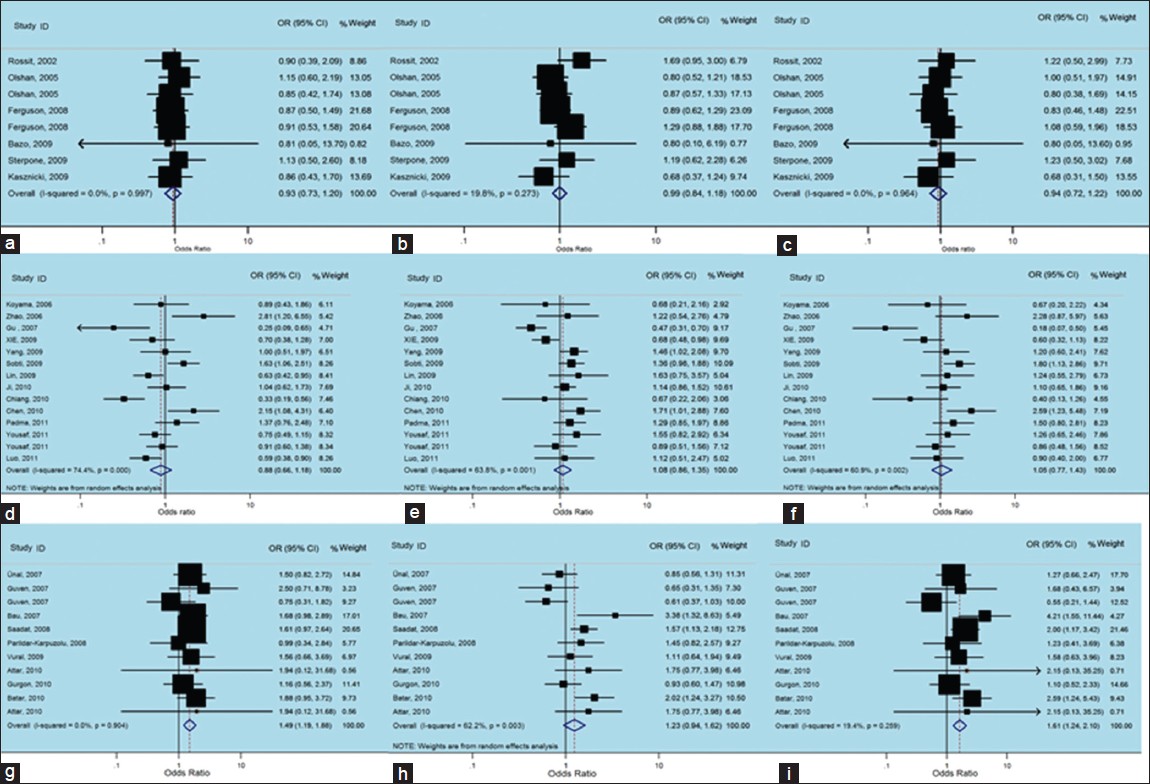
Figure 5: Forest plots of odds ratios with 95% confidence interval for X - ray repair cross - complementing group 1 polymorphisms and risk of non - carcinogenic disease (right) recessive model of Arg399Gln (Gln/Gln vs. Arg/Arg), (middle) dominant model (Gln/Gln vs. Arg/Arg+ Arg/Gln) and (left) Additive model (Gln/Gln + Arg/Gln vs. Arg/Arg); first row is a subgroup analysis in Caucasian population under an fixed - effects (FEs) model (a - c); second row is a subgroup analysis in Asian population under an FEs model (d - f); third row is a subgroup analysis in other population under an FEs model (g-i)
